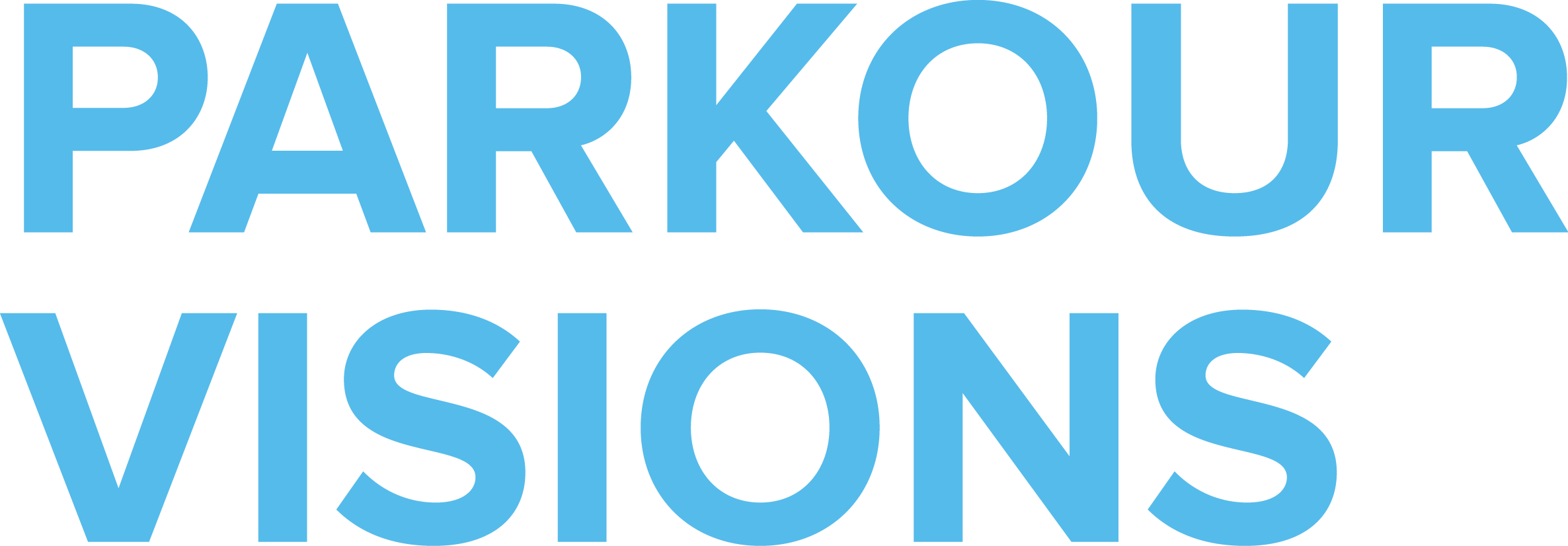Three Parkour Games for Kids and Parents (and Coaches, Too)
Have you ever struggled to enjoy moving and playing with your kids? Even if you love to watch them bounce around, high-energy kids can feel like a lot for parents to handle.
The secret is that children (and adults!) love to play. Let’s unfetter ourselves from rigid rules for fitness, exercise, gyms, and body expectations! When you learn to truly play, you boost your creativity, relieve stress, and strengthen your relationships.
Having a playful mindset is a core value at PKV. Parkour games are the perfect way for all ages to tap into the joy of movement. Coach Jason filmed three videos in our Portland community this summer to share some of our favorite parkour games we play in classes. Watch the videos and read about how to play the games below.
If you happen to be in Portland, you can sign up for our Family Parkour classes and learn parkour with your kids.
Jump the River
Players: 1+
Skills: jump power, jump variety, and other movements as desired
Jump the River is a great way to keep your kids active and motivated to practice their jumps. First, make two lines in a V-pattern (you can use chalk, cones, bark chips, and/or an actual curb or wall). These two lines are the "river." Each player takes turns jumping the river using standing or running jumps. Start at the narrowest end. If a player fully crosses the river without falling in, on their next turn they can take one step down the river and attempt a larger jump. If a player lands in the river, they must use quadrupedal or another designated movement to "swim" back down the river. The game is over once everyone has found and attempted their max jump multiple times and fallen in the river.
Add-on
Players: 2+ (you can also play Add-on with yourself)
Skills: flow, creativity, and collaboration. Also great at a warm-up, as inspiration, or to apply parkour skills you are working on.
The goal of Add-on is for a group of people take turns adding single movements to create a long sequence of movements that flow together. Start by choosing any obstacle. Whatever move comes to mind, start with that one. The next person adds the next move, and so on down the line, whatever flows from the previous move. When playing with a large group, it's nice to let each persoon do the whole line before the last person adds a move. If you can't do a move another player added, that's okay. You can alter the movement to suit your skill level. Try to keep flow in mind when you're playing Add-on. If your move doesn't flow, try it again, or try a different movement that flows better. At the end of the game, each player should try the whole line again.
“I’m a Star” Tag
Players: 4+
Skills: agility, practical parkour use in your outdoor spaces, quick decision-making skills while using parkour, and chase
The only things you need to play “I’m a Star” Tag are a big outdoor space and a couple of pool noodles for tagging. The person who is “it” starts out with the pool noodle. When they run and tag someone else, the tagged person does three jumping jacks while yelling, "I’m a star!" That person becomes "it," and they run and tag another person with the pool noodle. And so on. Tag-backs are okay after your three "I’m a stars." The number of taggers can be increased with a larger group and more pool noodles. The game is over once players are too tired to continue.
Final Tips
Experiment with adding unique rules or limitations to make the games more fun. Children are excellent at this, so you can follow their lead.
As an adult, you also need to set boundaries to protect your energy and your own safety. You can teach your kids to negotiate boundaries with you, such as how long you will play, when and how to call a time-out, boundaries around physical contact and rough-housing, and so on.
And remember, parkour is not about achievement, despite what you may see on YouTube and Instagram. Parkour is about the process. So immerse yourself in the journey: be in your body, focus on connection, and find your joy in movement.
For more ideas, read our 3-part series on parent-kid play. You can also find bite-sized play ideas on our Movement Snacks page, and plenty of parkour video tutorials on Leap to Lead.
ABOUT THE AUTHORs
Jason Budd has been training parkour since the age of 14 and has been coaching parkour for almost nine years. Jason sees parkour as a way of getting his anxieties out while also being creative and self-expressive. Jason also enjoys gaming, skateboarding, and making YouTube videos.
Rebecca Brightly writes stories about fitness and culture. Rebecca discovered parkour (“advanced urban navigation”) in 2017, after 10 years of partner dancing and teaching. Parkour has been a safe space to explore creativity, gender fluidity, discipline, and connection. @rebeccabrightly



